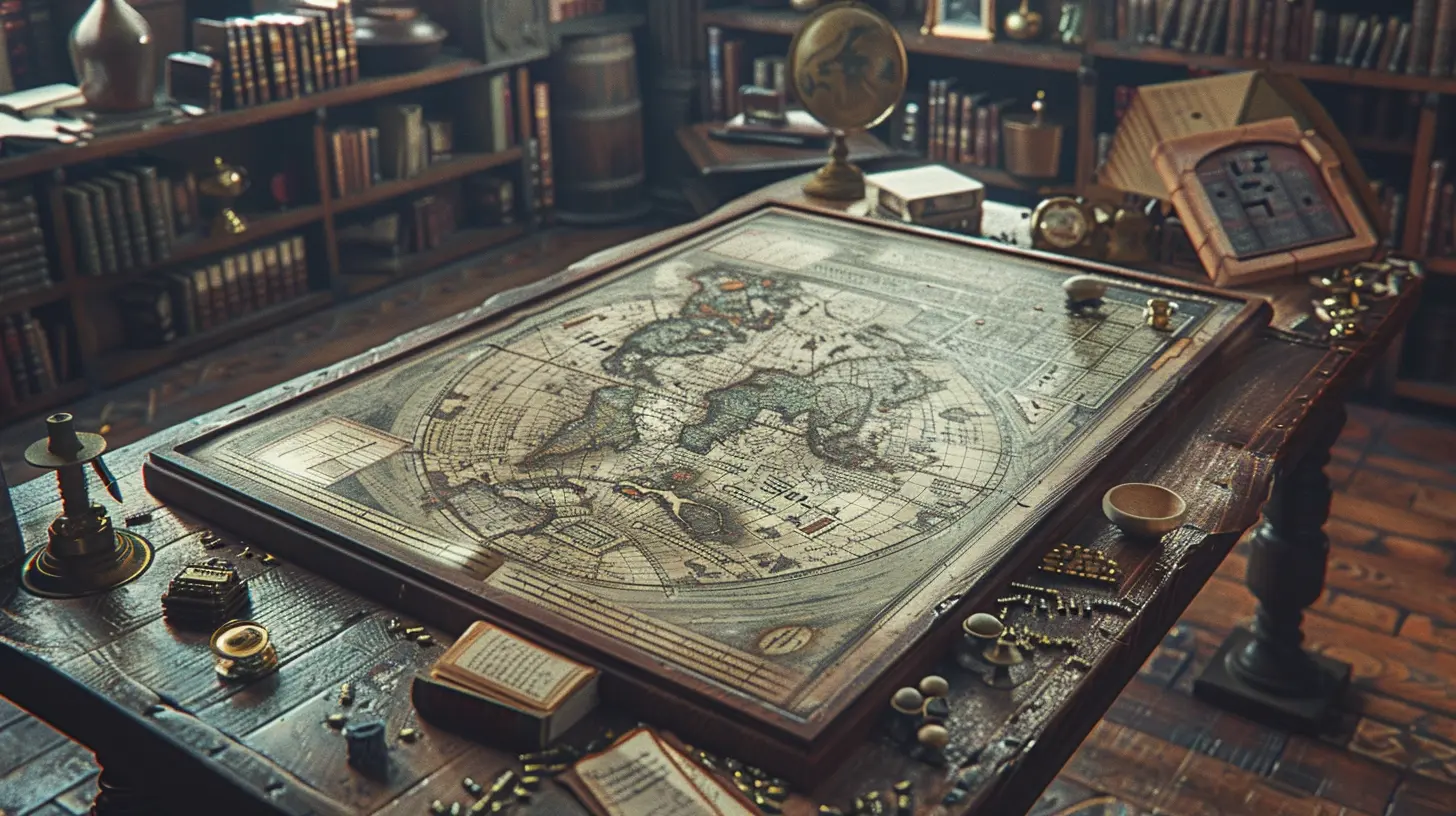Exploring the Art of Puzzle Games From the Golden Age
14 August 2025
Do you remember the satisfaction of cracking a particularly tricky puzzle in your favorite video game during the golden age of gaming? Puzzle games have a magical quality about them. They challenge our wits, tickle our brains, and leave us with a sense of accomplishment once the pieces finally fall into place.
From pixelated mazes to mind-bending logic challenges, the art of puzzle games has profoundly shaped the gaming industry as we know it today. So, grab your favorite beverage, kick back, and let’s take a nostalgic dive into the golden era of puzzle games and explore why they remain timeless.
What Defines a Puzzle Game?
Before we dig into the golden age, let’s pause for a moment and ask ourselves: what exactly makes a puzzle game? At its core, a puzzle game revolves around problem-solving. You’re not just pressing buttons and hoping for the best—you’re thinking, strategizing, and testing the limits of your brainpower.Whether it’s arranging tetrominoes in Tetris, solving intricate riddles in Myst, or escaping the eerily silent rooms of The 7th Guest, puzzle games vary widely in gameplay and style. But no matter the format, they share one thing in common: they ignite that “Aha!” moment we gamers live for.
The Birth of Puzzle Games
Let’s hit rewind for a second and go back to where it all began. Puzzle games have been around since the early days of gaming in the late 70s and early 80s. Back then, computers were still clunky, and graphic capabilities were modest at best. Yet, even with their technological limitations, developers managed to create some of the most engaging and memorable puzzle experiences.One of the earliest examples? Adventure (1979) on the Atari 2600. While technically classified as an action-adventure game, it had puzzle elements that required players to carefully explore, use logic, and think outside the box. It was a spark that would light the fire for countless puzzle-driven titles to come.
The Golden Age of Puzzle Games: 80s and 90s
Ah, the 80s and 90s—a time when puzzle games truly flourished. It was the golden age of creativity in game design, and puzzle games were front and center. Developers weren’t just giving us games; they were handcrafting experiences that made us feel clever. Let’s break down some of the iconic puzzle games from this era.#
1. Tetris (1984)
You can’t talk about puzzle games without mentioning Tetris. Designed by Russian game developer Alexey Pajitnov, this simple yet addictive game had players stack falling blocks called tetrominoes. The challenge was deceptively elegant: clear lines before the screen filled up. It was easy to play but hard to master—a hallmark of great puzzle games. Tetris is still a cultural phenomenon today, with countless spin-offs and reimaginings.Fun fact: Did you know Tetris was originally developed for the Soviet Union’s Elektronika 60 computer? Who knew falling blocks could unite the world?
2. Myst (1993)
If you’re into atmospheric games with a side of brain-bending, then Myst needs no introduction. Developed by Cyan Worlds, this first-person graphic adventure game threw players into a mysterious island filled with mind-twisting puzzles and breathtaking visuals. It wasn’t about hand-holding—it was about immersing yourself and letting curiosity lead the way.Myst was groundbreaking for its time and even inspired many modern adventure-puzzle hybrids, such as The Witness. Plus, it proved that games could be more than just entertainment—they could be art.
3. The 7th Guest (1993)
Ever wanted to combine haunted house vibes with clever riddles? The 7th Guest was your jam. This cult classic blended horror and puzzles in a way no one had seen before. Each room in the mansion came with a different challenge, whether it was solving a chessboard conundrum or rearranging word puzzles.With its eerie atmosphere, FMV (full motion video) sequences, and innovative use of CD-ROM technology, The 7th Guest was a technical marvel of its time. It was spooky, cerebral, and oh-so-memorable.
4. Lemmings (1991)
Who could forget those tiny, clueless lemmings? Lemmings was like herding cats but with a lot more strategy. You had to guide these adorable critters to safety by digging tunnels, building bridges, and assigning specific tasks. The levels were equal parts frustrating and rewarding—especially when one misstep led to chaos.This game taught us a valuable (and slightly dark) lesson: sometimes you have to sacrifice a few lemmings for the greater good. Sorry, little guys.
Why Were Puzzle Games So Addictive?
Okay, real talk: why are puzzle games from the golden age so addictive? What makes them so memorable? Here are a few reasons:1. Simplicity is Key
Great puzzle games don’t need fancy graphics or complicated mechanics. Just look at Tetris! The simplicity of the gameplay allows you to focus entirely on solving the puzzle, making the experience pure and rewarding.2. The Reward of Problem-Solving
Humans are hardwired to love solving problems—it gives our brains a dopamine boost. Puzzle games tap into this natural desire. Every time you complete a level or figure out a difficult riddle, it’s like giving your brain a high-five.3. Replayability
Another reason? They’re timeless. You can go back to Tetris or Myst years later, and the gameplay still holds up. The joy of solving a clever puzzle doesn’t fade with age.4. The Perfect Blend of Challenge and Fun
The best games strike a perfect balance: they’re tough enough to make you think but not so hard that they’re impossible. This balance keeps players engaged without losing them to frustration.The Legacy of Puzzle Games
The golden age of puzzle games may have passed, but their impact is still felt today. Modern indie games, in particular, owe much to the puzzle genre. Titles like Portal, The Witness, and Baba Is You have carried the torch forward, offering fresh takes on logic and problem-solving.Even beyond the gaming world, puzzle games have influenced how we approach design and storytelling. They’ve shown that games can be more than just action-packed adventures—they can challenge our minds and expand our creativity.
Wrapping It Up
So, there you have it—a trip down memory lane into the golden age of puzzle games. They weren’t just games; they were works of art designed to tickle our brains and keep us coming back for more. From the timeless block-stacking of Tetris to the eerie enigmas of The 7th Guest, these games will always hold a special place in the hearts of gamers.If you’ve got a favorite puzzle game from the golden age, don’t be shy—share it in the comments. Who knows? Maybe it’s time to dust off that old console and relive some classic brain-teasers. After all, the beauty of puzzles is that they never truly go out of style.
all images in this post were generated using AI tools
Category:
Retro GamesAuthor:

Greyson McVeigh
Discussion
rate this article
1 comments
Rosalind McLemore
This article beautifully captures the intricate design and creativity behind Golden Age puzzle games. It highlights how these classics not only challenged players but also laid the foundation for modern gaming, blending artistry with intellectual engagement.
September 14, 2025 at 4:00 AM

Greyson McVeigh
Thank you! I'm glad you appreciated the exploration of the artistry and impact of these classic puzzle games. They truly shaped the gaming landscape.


